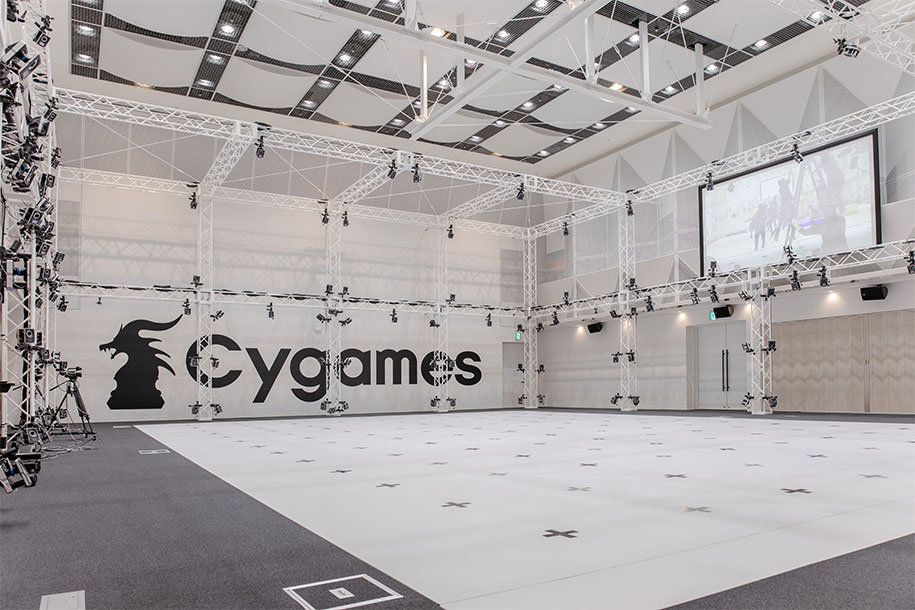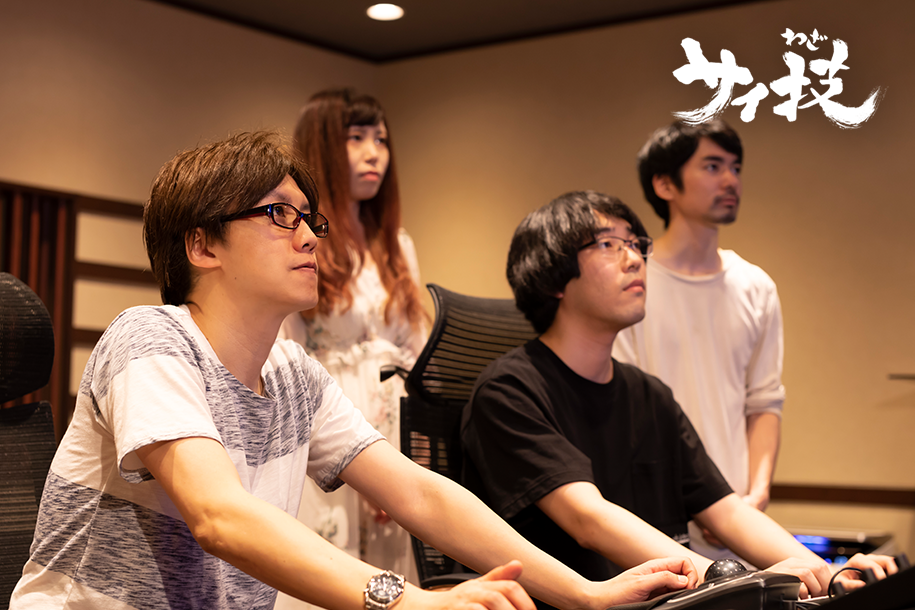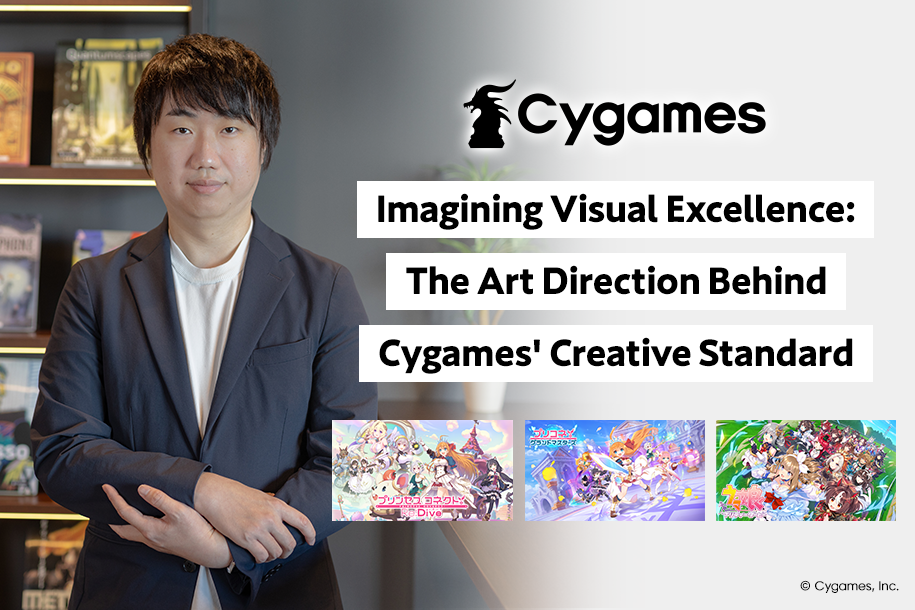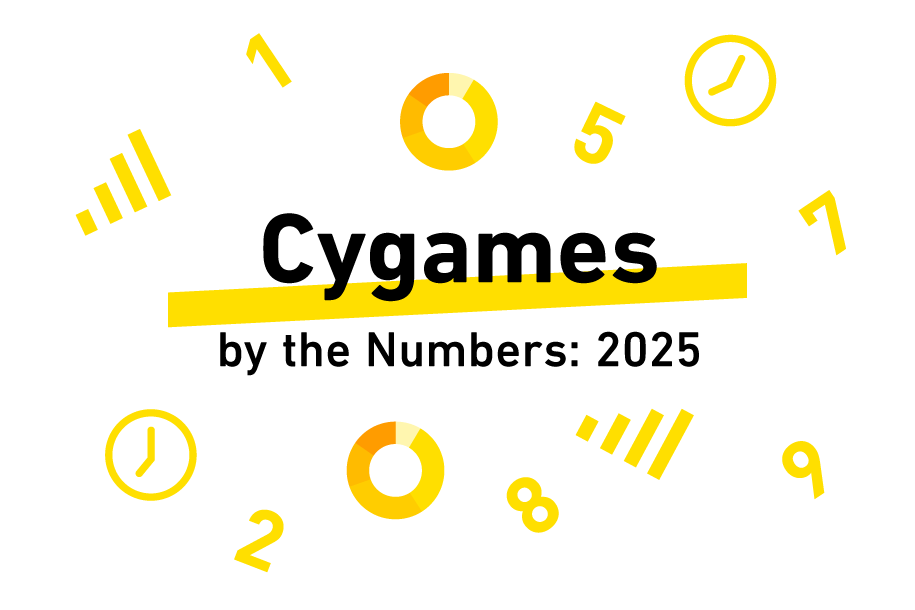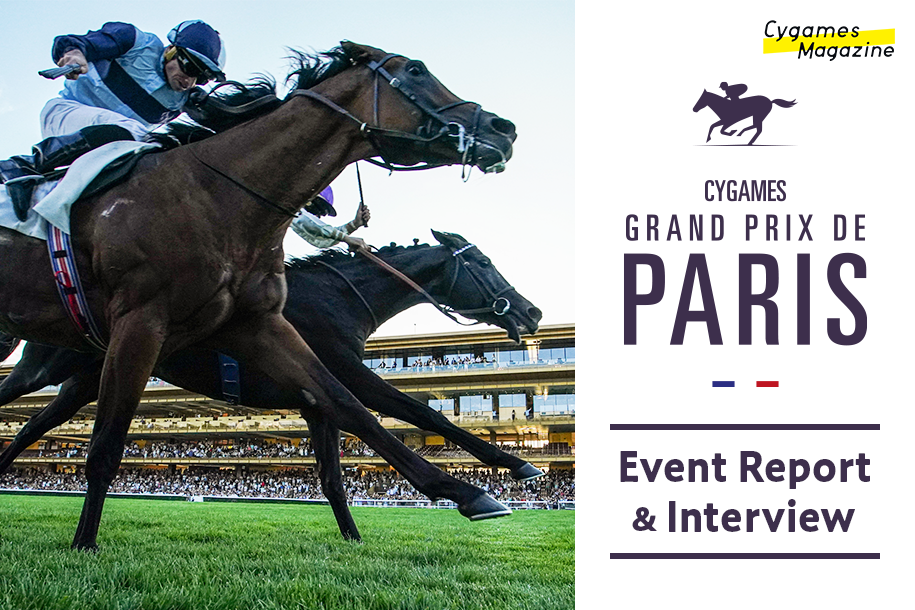Cygames Facilities Vol. 6: Osaka’s Foley Studio
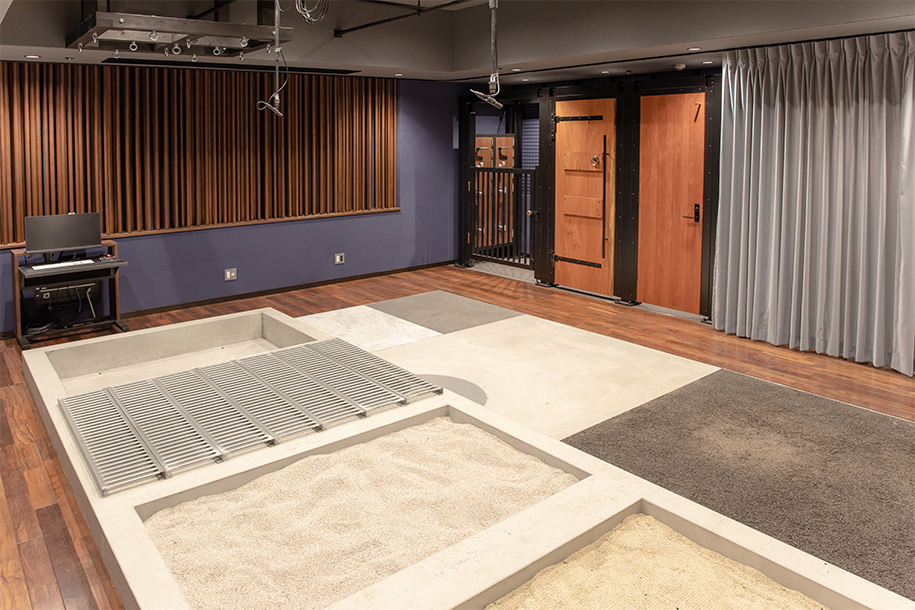
Here at Cygames, we are proactively investing in building new facilities in order to realize our goal of being the best in entertainment*. In Cygames Facilities Vol. 6, we’ll be taking a look at the Foley studio at Osaka Cygames that specializes in recording video game sound effects.
*Among these are our Scanning Studio (February 2017) and Face Scanner (January 2021), which use photogrammetry to create realistic 3D models based off of images, as well as our Motion Capture Studio (February 2018) and Osaka Motion Capture Studio (March 2022), which turn real-life motions of people into animation data.
How Osaka Cygames came to need a Foley studio
Foley is the practice of recording sounds to add to a video or animation by recreating them using a variety of objects. The capacities of gaming platforms—whether it is smartphones, consoles, or PC—have expanded in recent years, leading to games increasing their visual and audio quality drastically. Consequentially, the immersion and realism granted by Foley sound effects are coming to be expected from more and more titles. Up until now Cygames has used Foley sounds acquired from outside the company, but we have now created our own studio to allow us to create more immersive sounds that more intricately express the worlds of our games.
The recording area: where high-quality and varied sounds are created
The Osaka Foley Studio consists of a recording area and a control room.
In the recording area, the acoustic properties of the walls and ceiling were designed to provide a natural indoor environment that does not absorb too much sound.
The floor features asphalt, concrete, and marble sections, as well as pits to fill with sand, water, or anything else is required. These are all made large enough for the Foley artists (the people who make the sounds) to use easily, while still being far enough away from the walls to prevent the microphone from picking up echoes. The concrete pits are made to be strong enough to withstand being used to record the sounds of objects breaking, and their covers, which are made from two different kinds of wood and two different kinds of metal, can be used to record a wide variety of sounds as well.

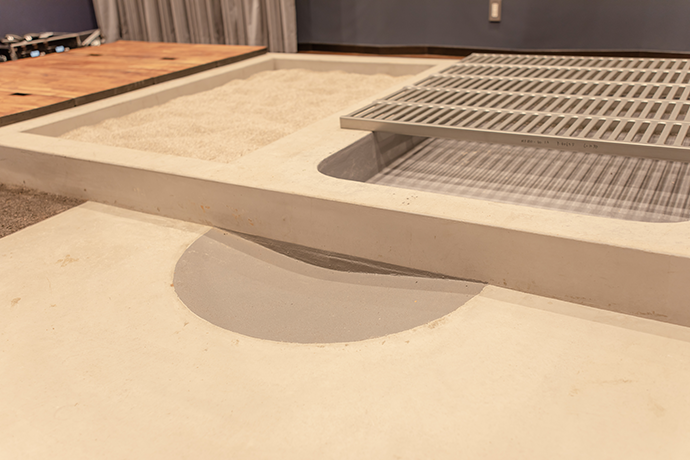
Additionally, the studio is equipped with many other features necessary to the recording process such as prop doors made of various materials, and places on the ceiling to hang heavy objects like sandbags. Another useful feature is the ability to hang the microphone stand from the ceiling, allowing it to be positioned so as not to get in the way of the process.
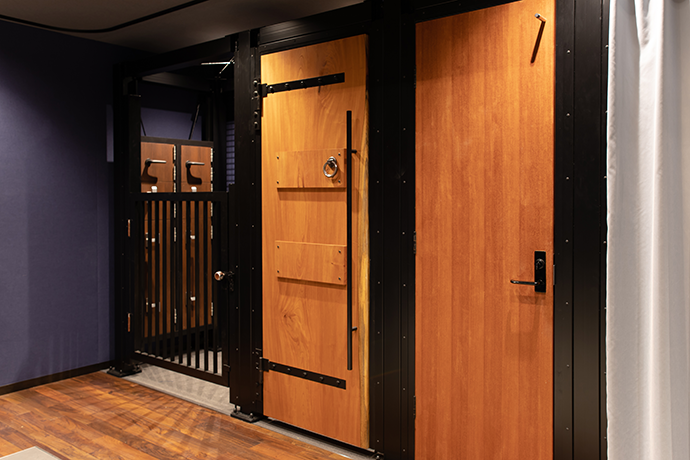
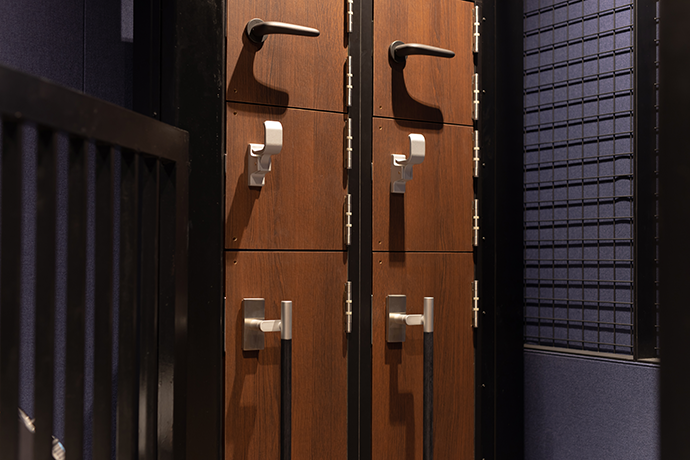
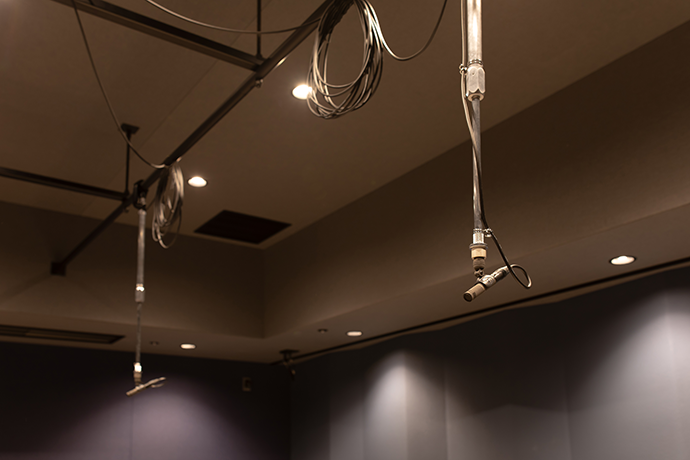
The control room, which is set up for recording remotely and to be used for non-recording activities
The control room has 5.1 speakers hanging from the ceiling. In addition to recording, this room can also be used for things like viewing and editing videos or sound mixing.
In order to maintain proper acoustics, there is no glass window connecting the control room and recording area like there would be in a normal sound studio. Instead, cameras of various sizes are set up in the recording area to help the Foley actors work with the people in the control room. Moreover, the video and audio from the recording area can be output wherever necessary in real time using a matrix switcher. The fidelity is high enough to judge the quality of the sounds being made remotely, allowing those located at the Tokyo office to watch the recording happening and give instructions to the Foley artists at the Osaka office.
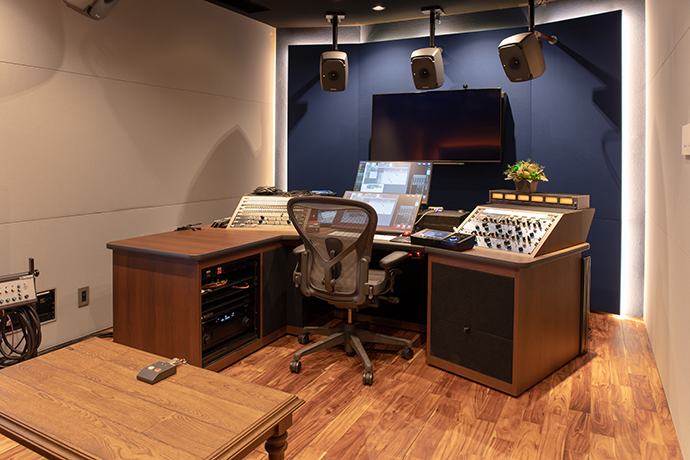
Let’s ask the Head of Foley Recording! The potential of Foley and future prospects
- Head of Foley Recording, Sound Department Takamichi
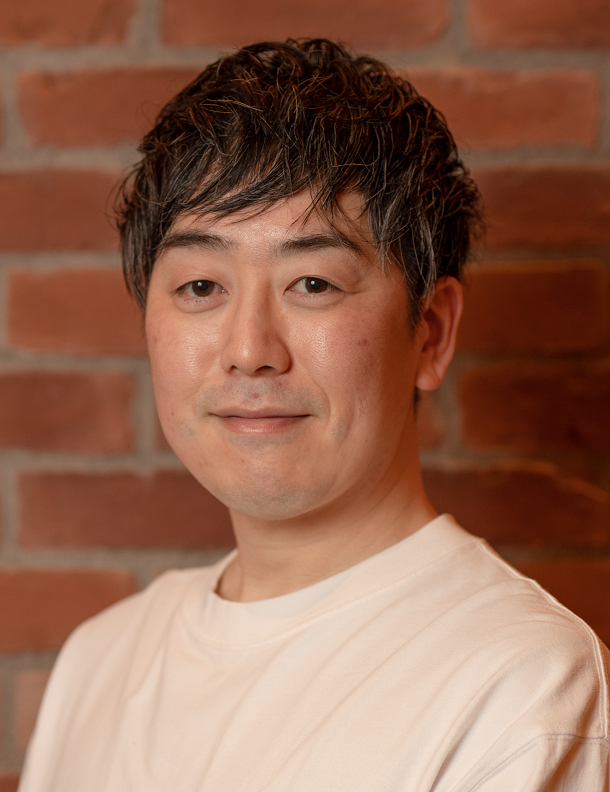
- Takamichi joined Cygames in 2015 with experience working for an overseas game publisher. He has since worked on sound design for games such as Umamusume: Pretty Derby and Granblue Fantasy. In 2022, he was appointed Head of Foley Recording and placed in charge of the Osaka Foley Studio.
Please tell us about the purpose of establishing an in-house Foley studio.
As more and more titles are expected to have Foley sound, we wanted to be able to more efficiently record higher quality sound, so we made our own studio.
Up until now, we’ve either used our non-Foley recording studio to do simple things or worked with an outside recording studio, but that led to scheduling problems during the parts of the year they’re most busy. On top of that, outside studios all have their own unique approach to recording, so sometimes we’d have cases where the sound just didn’t quite fit the title we were working on. Finally, we wanted to be able to record without having to worry about time and try all kinds of ideas through trial and error.
Since it’s our own studio, we can customize it however we want, and the more trial and error we go through, the faster we accumulate experience.
What kind of things would you say are vital to recording immersive Foley sound?
I believe that imagining what something should sound like and then recreating that sound is more important than trying to use materials and objects that are as close as possible to what’s making the noise you’re replicating.
Foley sound can be used to intimately express characters’ emotions and add realism to the atmosphere of a scene, but “realism” is a tough customer. (laughs) For instance, in the real world, footsteps and the sound of clothing are just kind of unorganized and chaotic. If we just dropped those kinds of noises into our games, they wouldn’t match the atmosphere and would harm immersion. When recording Foley sound, you want to specifically imagine what kind of sound you’re going to make while thinking about how it’s going to be used, then think about how and with what you’re going to make that sound.
For games especially, as opposed to movies or TV shows, you’ll sometimes do things like record sounds for the right hand and left hand separately, so you really want to focus on the details and create something that feels right. I believe that those kinds of sounds are what make games most immersive in the end.
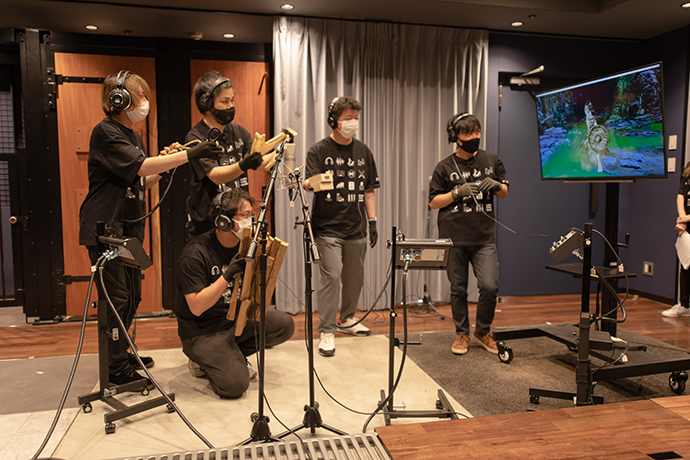
Also—and this applies to sound recording in general—being prepared before the recording starts is very important. The artists, engineers, assistants, and audio director all work together to do the recording; so if, for instance, the audio director doesn’t have a good idea of what kind of sound they want and gives vague instructions, the artists won’t be able to put their all into their acting, and the engineers won’t know how to figure out what kind of equipment they should use.
The process of using trial and error until you happen upon the right sound is important, but that won’t happen if the staff neglect to get the groundwork done before they start recording.
Tell us about where we can expect the Foley studio at Osaka Cygames to go from here.
Well, there’s no point having a studio and not using it, so first off we want to be in there making excellent Foley sound for our users whenever the opportunity arises. Second, though the studio itself is finished, there is still a lot we can continue working on. As we use the studio, we’ll identify and address points of improvement and grow along with it.
The artists, mixers, recordists, and everyone else on the Cygames Foley team are all working together to become the best producers of Foley sound in the world.
And that wraps up our introduction of the Foley studio at Osaka Cygames.
Our ability to add flavor to our games is constantly evolving. Please look forward to hearing sounds in our games that realistically express the worlds we have created. We at Cygames will continue working to acquire any facilities we need to deliver to you entertainment that is crafted with artisanal precision down to the last detail.



